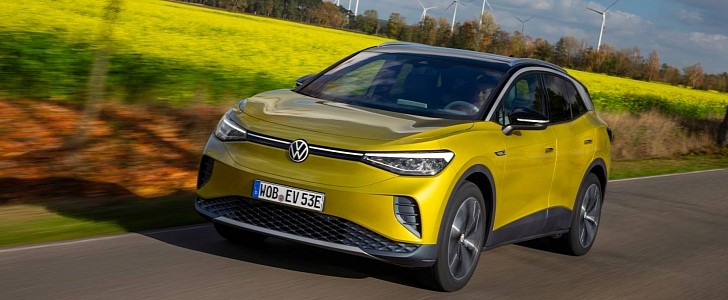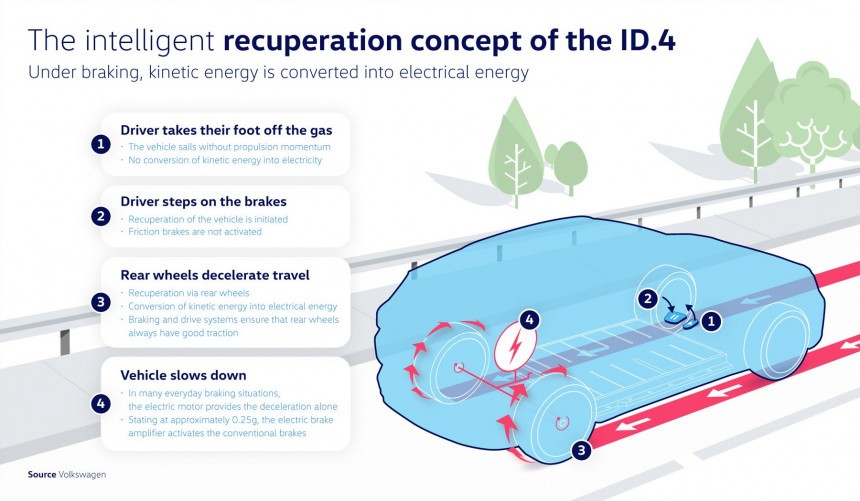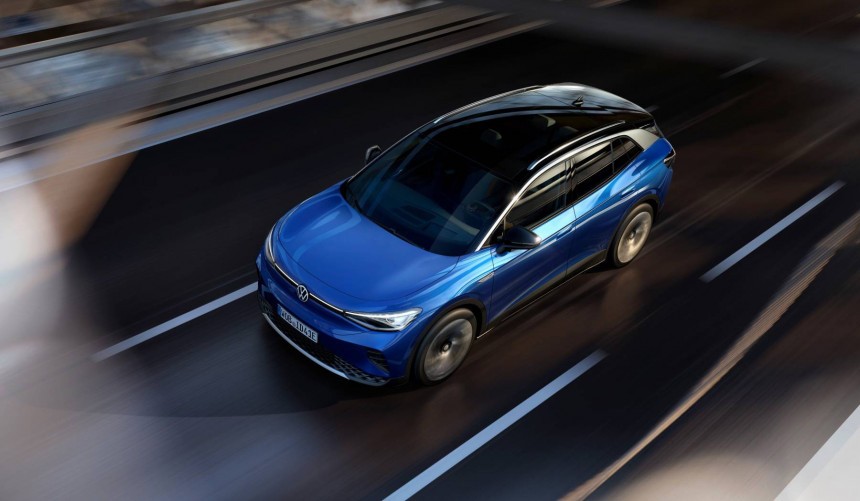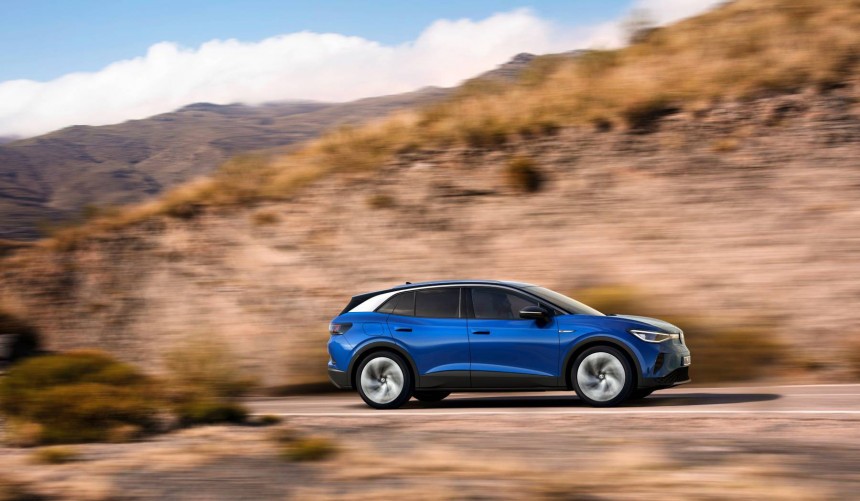The transition to electrification has been gaining momentum over the past few years. Though at first the rather low efficiency of EV powertrains and the resulting range anxiety made potential customers think twice, manufacturers like Volkswagen have raised the bar, introducing new, highly efficient, and cost-effective fully electric models. One of the keys to the growing efficiency of such vehicles is the use of intelligent energy recuperation technologies.
One question defines the development of electrical drives today: should they act as a generator to convert kinetic energy into electrical current when the driver takes his or her foot off the accelerator, or should it run without this function so that the momentum is used for coasting?
The answer differs depending on the manufacturer and the model. For Volkswagen, especially in the case of the ID.4 and its smaller ID.3 sibling, the answer is simple. Coasting is the way to go because any conversion unavoidably leads to loss of energy.
When the default D (Drive) mode is selected, this function does not just improve the efficiency of the drive; it also makes for comfortable and predictive one-pedal driving.
If the situation demands more deceleration, the brake pedal can be pressed, thus activating the vehicle’s brake energy recuperation function.
During most of the everyday braking maneuvers, the electric drive motor is solely responsible for braking, while the electric brake servo unit only engages the calipers in situations where sudden deceleration is required.
For drivers, the transition from electric motor-based braking to conventional, hydraulic braking goes almost unnoticed due to the highly accurate system control. This system also makes sure the rear wheels that drive the vehicle always have enough grip, even if brake energy recuperation is active.
Each VW ID.4 comes with predictive Eco Assistance as standard.The system analyses data from the vehicle’s sensor suite and navigation to provide the most efficient driving experience without sacrificing comfort or performance.
Once the e-SUV approaches an area with heavy traffic, Eco Assistance notifies drivers to take their foot off the accelerator, managing optimum coasting and energy recovery without the need for any additional user inputs. The system behaves similarly when the ID.4 approaches a slower vehicle ahead.
Drivers can use the rocker switch on the main display to change the driving mode from D to position B (Brake) at any time. This mode prioritizes the vehicle’s ability to recover energy, providing a more traditional driving experience where drivers use the brake pedal more frequently.
High-end ID.4 versions equipped with the Plus sports package come with an extra tool that manages the use of either coasting or energy recuperation, in the form of an additional Sport driving profile. It supports the use of brake energy recuperation even in D mode but dynamically enables or disables it depending on the driving conditions.
The new ID.4 promises to be an efficient and comfortable family-oriented electric SUV that can also put forward a sporty character for those looking for a more adrenaline-packed driving experience.
Following the launch of its first electric vehicle, the compact ID.3, the German carmaker has quickly expanded its ID. product range and plans to invest over $13 billion (€11 billion) in electric mobility by 2024, as part of the Transform 2025+ strategy.
The answer differs depending on the manufacturer and the model. For Volkswagen, especially in the case of the ID.4 and its smaller ID.3 sibling, the answer is simple. Coasting is the way to go because any conversion unavoidably leads to loss of energy.
When the default D (Drive) mode is selected, this function does not just improve the efficiency of the drive; it also makes for comfortable and predictive one-pedal driving.
During most of the everyday braking maneuvers, the electric drive motor is solely responsible for braking, while the electric brake servo unit only engages the calipers in situations where sudden deceleration is required.
For drivers, the transition from electric motor-based braking to conventional, hydraulic braking goes almost unnoticed due to the highly accurate system control. This system also makes sure the rear wheels that drive the vehicle always have enough grip, even if brake energy recuperation is active.
Once the e-SUV approaches an area with heavy traffic, Eco Assistance notifies drivers to take their foot off the accelerator, managing optimum coasting and energy recovery without the need for any additional user inputs. The system behaves similarly when the ID.4 approaches a slower vehicle ahead.
Drivers can use the rocker switch on the main display to change the driving mode from D to position B (Brake) at any time. This mode prioritizes the vehicle’s ability to recover energy, providing a more traditional driving experience where drivers use the brake pedal more frequently.
The new ID.4 promises to be an efficient and comfortable family-oriented electric SUV that can also put forward a sporty character for those looking for a more adrenaline-packed driving experience.
Following the launch of its first electric vehicle, the compact ID.3, the German carmaker has quickly expanded its ID. product range and plans to invest over $13 billion (€11 billion) in electric mobility by 2024, as part of the Transform 2025+ strategy.











